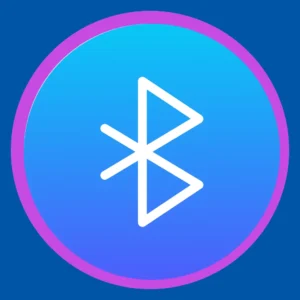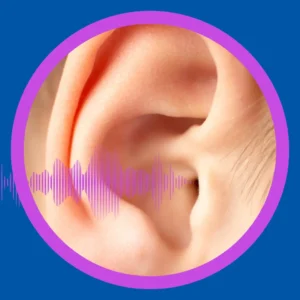Bluetooth and Noise Canceling: Hearing Aid Win
Hearing aid technology has come a long way in recent years. One of the most exciting improvements is the addition of hearing aids with Bluetooth and noise canceling features. These innovations allow people with hearing loss to enjoy clearer conversations, connect wirelessly to devices, and hear comfortably in noisy places. In this guide, we’ll explain how these technologies work, their benefits, and what you should know before choosing the right hearing aids for your needs.
What Is Bluetooth in Hearing Aids?
Bluetooth is a wireless communication technology that allows devices to connect and share audio signals. In hearing aids, Bluetooth makes it possible to stream sound from phones, tablets, computers, and TVs directly into your ears.

How Bluetooth Technology Works in Hearing Aids
Bluetooth-enabled hearing aids include small built-in antennas that receive signals from compatible devices.
- Bluetooth enables direct streaming of phone calls, music, and other audio sources. This means users no longer have to rely on external microphones or accessories to hear clearly.
- Many hearing aids now support Bluetooth Low Energy (BLE), which uses far less power than older versions. BLE extends battery life while maintaining strong connectivity.
- Some hearing aids are compatible with Apple’s Made for iPhone (MFi) or Google’s Audio Streaming for Hearing Aids (ASHA). These protocols allow for smooth streaming and seamless pairing with smartphones.
- Newer models may support Bluetooth LE Audio. This recent update allows for more efficient streaming and prepares devices for future public features like Auracast broadcasts.
Bluetooth technology provides a smoother, more convenient listening experience while keeping hearing aid users connected to modern devices.
Discover more about Bluetooth hearing aids.
Understanding Noise Canceling in Hearing Aids
Noise canceling is a feature that helps reduce unwanted background sounds so you can better focus on speech or other important sounds. This is especially helpful in places with lots of noise, like restaurants, airports, or busy streets.
How Noise Canceling Works in Hearing Aids
Noise canceling in hearing aids relies on a mix of microphones, computer chips, and signal processing.
- Tiny microphones on the hearing aids pick up sounds from your environment. These microphones detect both the sounds you want to hear—like voices—and those you want to reduce—like traffic or chatter.
- The hearing aid’s processor analyzes these sounds in real-time. It identifies background noise patterns and applies advanced algorithms to reduce those unwanted noises.
- Some hearing aids generate “anti-noise” signals to cancel background sound. These signals are the opposite of the unwanted soundwaves, which cancels them out through a process called phase inversion.
- Other hearing aids use digital signal processing (DSP) to simply suppress background noise. This method is more common and reliable in hearing aids than full active noise canceling (ANC).
- Directional microphones can also enhance speech clarity. These microphones focus on sounds coming from directly in front of you and reduce sounds coming from the sides or behind.
With noise-canceling features, hearing aids can adapt to your environment and provide better clarity without overwhelming background sound.

Types of Noise Canceling Technology in Hearing Aids
Noise canceling can be achieved through different methods. It’s important to understand the differences so you can make an informed decision.
Active Noise Cancellation (ANC)
ANC is commonly found in headphones but is occasionally used in hearing aids.
- ANC works by detecting incoming noise and creating an inverted soundwave to cancel it. This is known as phase inversion, where the sound and its opposite cancel each other out.
- To perform ANC, the hearing aid must include microphones, speakers, and fast-processing chips. This increases complexity and battery usage.
- Although ANC can be effective, it is difficult to apply in real-time in open environments. That’s why it’s not commonly used in hearing aids.
- ANC is better suited for consistent background noise, such as airplane engines or air conditioning hum. It may not work well for unpredictable noise patterns.
Because of these limitations, many hearing aids rely on a different approach to noise canceling.
Digital Signal Processing (DSP)
DSP is the standard and most reliable method used in today’s hearing aids.
- DSP works by analyzing sound frequencies and reducing background noise based on preset rules. It doesn’t add any new sound; instead, it filters out unwanted noise.
- This approach is stable, efficient, and less likely to introduce audio artifacts. It maintains clarity without creating additional noise.
- DSP can also be adjusted through smartphone apps. Users can fine-tune settings based on their preferences and environment.
- Most modern hearing aids use DSP to provide clean, comfortable hearing. It offers the best combination of performance and ease of use.
Understanding the difference between ANC and DSP helps you choose a model that fits your hearing goals.
Learn more about the best hearing aids for noisy environments.
Benefits of Hearing Aids with Bluetooth and Noise Canceling
Together, Bluetooth and noise canceling technologies improve how users interact with the world around them. These features deliver major benefits in daily life, communication, and hearing comfort.
1. Clearer Communication in Any Environment
- Bluetooth streaming makes phone and video calls easier to hear and understand. Audio plays directly into your hearing aids, reducing echoes and background sound.
- Noise canceling helps isolate voices and improve speech clarity. You can better follow conversations in noisy places, like restaurants or family gatherings.
- Both features reduce the need for repetition. You won’t have to ask others to repeat themselves as often.
2. Greater Convenience and Control
- Bluetooth eliminates the need for external accessories or tangled wires. Everything streams wirelessly into your hearing aids.
- Most Bluetooth hearing aids come with smartphone apps. These apps allow you to change volume, switch programs, and even request remote adjustments.
- You can easily switch between devices. For example, listen to a podcast on your phone, then take a call—all without touching your hearing aids.
3. Safer and Healthier Listening Habits
- Noise canceling allows you to hear clearly at lower volumes. This helps protect your remaining hearing.
- Reduced strain lowers listening fatigue and cognitive stress. You won’t feel as tired after long conversations or noisy events.
- Volume levels stay comfortable throughout the day. You don’t need to constantly adjust settings to hear better.
4. Personalized Sound That Adapts to You
- Many Bluetooth hearing aids use artificial intelligence (AI) to learn your preferences. They adapt automatically to different sound environments.
- Users can customize settings through mobile apps. Change tone, balance, or program based on what you hear.
- Some models allow remote fine-tuning. Your hearing care provider can adjust your devices without needing an office visit.
These combined benefits improve quality of life and make hearing more effortless and enjoyable.
Hearing Aids with Bluetooth and Noise Canceling: Top Models
Several hearing aid brands now offer devices that include both Bluetooth and noise canceling. Let’s explore a few leading options and what makes them special.
Phonak
Phonak hearing aids are known for their dependable connectivity and strong background noise reduction.
- The Audéo Infinio series offers robust Bluetooth features with support for up to 8 devices. You can connect to both Android and iPhone easily.
- Their noise reduction algorithms are highly effective in busy settings. You’ll notice clearer conversations and less background distraction.
- Phonak’s app provides excellent user control. You can adjust settings and track hearing aid performance on your phone.
Starkey
Starkey devices combine hearing technology with wellness-focused tools.
- Their Edge AI platform uses artificial intelligence to process sound in real-time. It responds to your environment instantly.
- Advanced models include features like fall detection and activity tracking. These features support safety and well-being.
- Bluetooth and DSP-based noise reduction come standard in many models. This ensures clear sound and easy connectivity.
Explore more about Starkey hearing aid models.
ReSound
ReSound focuses on natural sound and user-friendly streaming features.
- The ReSound Vivia line features strong Bluetooth support and app-based personalization. You can switch settings quickly as your environment changes.
- Their directional microphone systems are designed to mimic natural hearing. This helps you better locate sound sources.
- Noise canceling is highly effective and discreet. It works in the background without interfering with speech.
Find out more about ReSound hearing aids.
Unitron
Unitron builds hearing aids that focus on user comfort and ease of use.
- The Moxi and Vivante lines feature Bluetooth and adaptive noise canceling. These models automatically adjust to different environments.
- Their smartphone apps give users full control over sound settings. You can change programs or volume from your pocket.
- Unitron’s focus on clarity and simplicity makes them ideal for everyday users. Their designs balance performance with comfort.
Each of these brands offers something unique. A hearing care provider can help you choose the best option for your hearing needs.
Why Work with a Hearing Care Provider
Choosing the right hearing aid requires more than reading product specs. A licensed hearing care provider plays a key role in your success.
- They conduct thorough hearing tests. This ensures your hearing aids are tuned to your exact hearing loss.
- They recommend hearing aid models that match your lifestyle and preferences. This includes factors like Bluetooth use, noise levels, and comfort.
- They provide fittings, support, and adjustments. If your hearing aids need changes, they’re ready to help.
- They can perform remote tuning for certain models. You can get expert help without visiting the office.
With a hearing care provider, you receive ongoing support and a better outcome.

Discover Advanced Hearing Technology at Stanford Hearing
If you’re looking for hearing aids with Bluetooth and noise canceling, Stanford Hearing can help. Our team will guide you through every step—from hearing evaluation to fitting and follow-up care.
We offer the latest models from top brands and will make sure you get the best hearing solution for your needs.
Contact Stanford Hearing today to schedule a consultation. Hear more clearly, live more fully, and stay connected to the world around you.
